Content Marketing Strategy: How to produce great content
Without content, marketing would be blank pages and empty squares. Every aspect of your marketing plan, from brochures and billboards to social media and blogs, revolves around content. But what makes good content and how do you use it? The following includes a definition of good content, how to begin creating a plan to use it, and a few content mediums that compliment each other well.
Content has become vital in recent years and trends show that high quality content will remain a crucial part of marketing in the future.
Businesses of all sizes are getting more and more specific about how their marketing content is created; many of them are building content creation teams and/or hiring third party copy writers specifically for this purpose. In other words, businesses are investing more time and money towards their content and for good reason. In 2017, 47% of B2B content marketers said that their decreased success was related to the content creation process. 57% stating challenges related to lack of time devoted to content marketing. So, where do we go from here?
First, when we say content, we’re referring to written content, the heart of the message of a marketing resource.
Today’s content must not be cheap filler, must not be duplicated for the sake of adding content, and must not be stolen from other experts and reposted. Google now penalizes copyright violations in efforts to provide their users with the best possible experience where users can find the most relevant, helpful, and credible information immediately. Create original content on topics that haven’t already been exhausted. Why do people read non-fiction? To learn something new, to learn a new idea about something old, and how to apply this newly acquired information.
If your business has a blog, for example, use content that centers around your user’s pain points and delivers a how-to solution. How do you know your customers’ pain points? Ask them. Talk to your current clients about their issues or concerns, and use your marketing platforms to help address those. Proving to them that you understand, and you care. You can also search for frequently asked questions about your industry and come up with answers – simultaneously establishing you/your business as an expert in the field. Copy Tactics has a great explanation about this in their blog How to Find Customer’s Pain Points.
Second, where do you start producing content?
Blogs are a great starting place for producing content. Successful websites offer their users new, updated, and useful information on a regular basis through a blog section (blogs can be linked back to through email campaigns, infographics, videos, and social media postings). Blogs should focus on long-form content of around 2,500 words with how-to’s explained. Show each step in a process so that anyone can easily replicate it. Hubspot offers a blog about How to Write a Blog Post along with 5 templates to get you started. If you’re not convinced that blogging is a worthwhile endeavor, know that it gives you credibility as an expert, and gives your website a leg up on SEO ranking, both huge benefits for your business.
Third, when approaching content consider providing credible, source-based answers to the content topic one of your main objectives.
It’s just as important to be concise as it is to be thorough – make sure your content is easily digestible for your audience, and always be accurate in your reporting and sourcing. Remember to fact check yourself and verify any statistics that are stated with a link back to the statistic and source. Additionally, ensure that the source is legitimate and credible. Publishing false, misleading, or incorrect information could negatively impact your bottom line and the credibility of your business. Also, keep in mind that you don’t want to link a blog on your site to your competition’s site.
Last, there are a few other notable mentions to consider when preparing to produce dynamic content. These include:
A good headline. This will arouse curiosity in your user and prompt them to continue reading. Consider these statistics from Copyblogger: 80% of readers will read your headline, but only 20% will continue in reading the rest of the content. I usually reference this data about effective headlines from Buzzsumo when creating headlines for our company.
Leave readers with questions. You do not want them to be confused, but you do want them to reflect on what they have read. A comment section at the end of your blog allows you to engage directly with your readers, and tells search engines that your site is updated regularly, which can help bring more traffic to your site.
Introduction is everything. Find a creative way to give your user a reason to care about the following content.
Incorporate stories. Weave a story into your explanation that will enhance user understanding and promote clarity. If you have experience with the topic at hand, use your own testimony to help your user learn.
Content Marketing Strategy: How to Use Great Content
Now that you’ve got a set of parameters to base your content on, a clear content strategy is your next step. A documented content marketing strategy ensures objectives are being met, and your message is being delivered to your target audience timely and effectively enough to persuade them to act. Surprisingly, only 37% of B2B businesses have a documented content strategy. HubSpot data tells us that marketers who prioritize blogging are 13 times more likely to see a positive return on investment, and a documented process will ensure timely completion. Sporadic, unpredictable postings give users little reason to return.
Your documented content strategy does not have to be complicated. Start by planning topic ideas and mediums you would like to use. Next, create a calendar and stick to it, and last schedule posts. Still having a hard time coming up with topics? Use Hubspot’s Topic Generator. Type in keywords you would like to use and Hubspot will give you 5 topic suggestions, and you can hit the “try again” button to see more. Use that calendar we talked about to create a schedule of topics for yourself. Planning your topics ahead of time will help you maintain your goals for consistent posting. When you’ve got a new blog up, create posts on your social media to let your audience know about them.
Content Marketing Strategy: Where to Use Great Content
While we have discussed blogs as being a great jumping off point, you can transfer the information you shared in the blog via infographics and video. These items can be used to compliment the blog, or shared on other digital mediums linking back to the blog.
Infographics – According to a study done by Infographic World, 90% of information transported to the brain is visual and visuals are known to improve learning and retention by 400%. Their report details that learning and retention of information is most influenced by infographics followed by commercials and power points.
Infographics can be used to share previously published content in a powerful and effective way. A good infographic should distill advanced ideas into simple visual form. As always, check your facts and cite your sources.
Keep in mind the following when creating your infographic:
-
- Infographics work best when they drive a single, focused point and illustrate things visually, with a balance between graphics and copy.
- Keep to a manageable length and size and ensure the text is readable, especially when resized.
- Create a killer headline for your infographic – it should describe the infographic, grab the user’s attention, and be short enough to understand at a glance (70 characters is a good length). Don’t tell the whole story with your headline, but entice with a promise to deliver interesting information further in the graphic.
- Focus on the flow. Don’t just throw a bunch of information into graphical form. Tell a story with your infographic by taking the reader through one phase to another, sequentially and seamlessly.
Video – If you have not incorporated video into your digital marketing strategy, now is the time. Hubspot reports that video is expected to claim more than 80% of all web traffic by 2019. Adding a video to marketing emails can boost click-through rates by 200-300%, embedding videos in landing pages can increase conversion rates by 80%, and 90% of customers report that product videos help them make purchasing decisions.
The answer to whether or not to create a video should stem from your marketing goals and strategies.
If you have a blog or infographic focusing on a particular message, another marketing tactic could be to create a video that shares the same message, design look, and feel. Also, as is suggested for any content, concentrate on the value you can bring to your customer – remember to consider their pain points – and center your content around that value. Create content that will give your viewer an emotional reaction – laughter, joy, a call to action. Most viral images evoke happiness, surprise, admiration, or satisfaction. Inspire your viewers with a motivational message that encompasses your brand and makes a lasting impression. Try not to create infomercials. It’s possible to make videos that promote your brand without being preachy. Make sure your brand values are well represented in the content, and give people information they care about.
The length of your video should be determined by the platform on which it will be shared.
Youtube videos are preferably longer than Facebook. Hubspot has a great infographic explaining the various lengths for video on several popular platforms. A majority of people will watch a video that is 10 to 20 seconds long. In addition, 66% of viewers will watch a video 30 seconds long. But, that number drops to 46% at 60 seconds and continues to drop as the length of the video increases.
When it comes to content, this information is the tip of the iceberg. Remember, your message matters, and content is everything. So, create content that is memorable and thought provoking. Then, apply tactics such as blogs, infographics, and video to promote your message across various different mediums. Having an assortment of tactics with the same message, look, and feel will ensure your message is reaching more of your audience than one tactic alone. More information can be found by visiting A Beginner’s Guide to Content Marketing from Moz. Best of luck!



